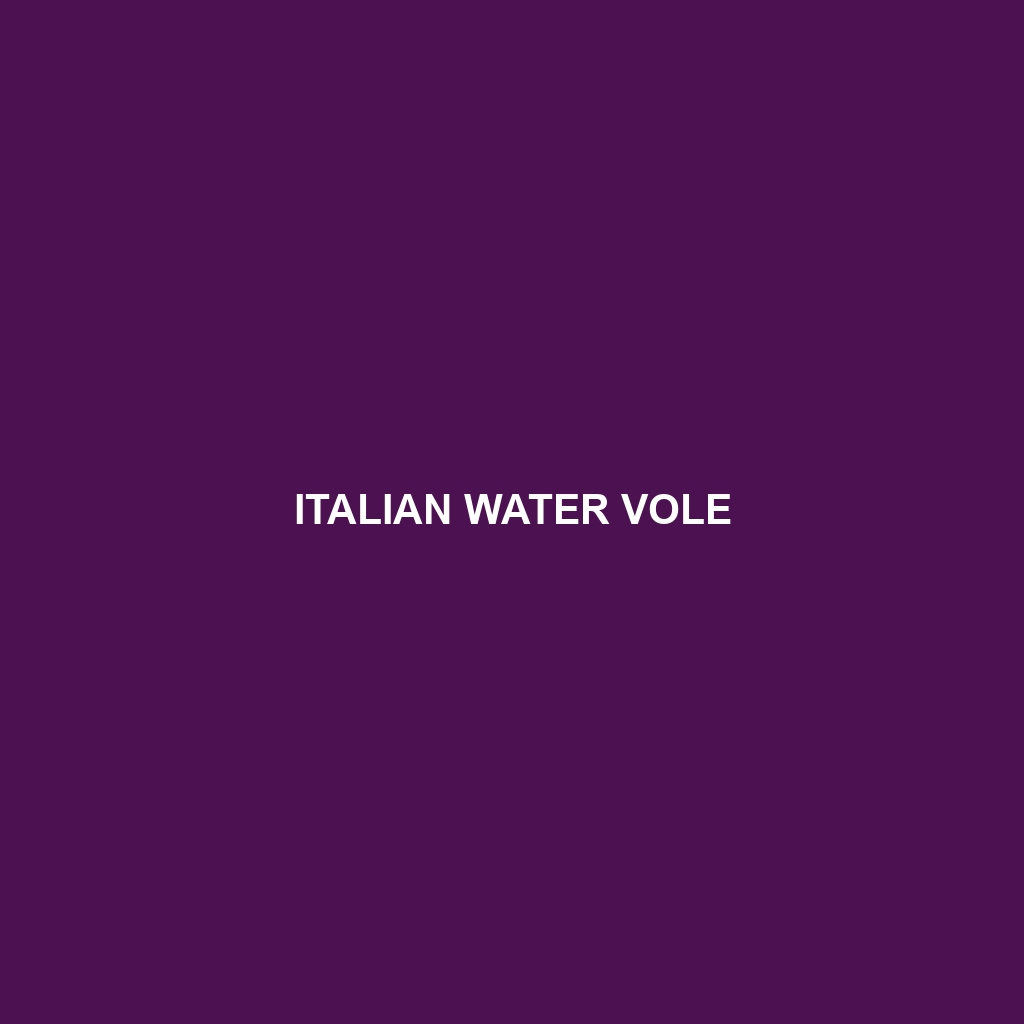Italian Water Vole (Arvicola italica)
Common Name: Italian Water Vole
Scientific Name: Arvicola italica
Habitat
The Italian Water Vole, scientifically known as Arvicola italica, is primarily found in wetland areas of Italy and its surrounding regions, including parts of France and Switzerland. This species typically inhabits riverbanks, marshes, and lakesides, favoring environments with abundant vegetation that provide both food and shelter.
Physical Characteristics
Italian Water Voles are medium-sized rodents, usually measuring between 25 to 30 centimeters in length, including a short tail. They possess a dense, waterproof fur that is generally a rich brown color with a lighter underbelly. Their rounded bodies and small ears, along with webbed feet, are distinctive features that adapt them well to their aquatic habitats.
Behavior
Known for their semi-aquatic lifestyle, Italian Water Voles are primarily crepuscular, being most active during dawn and dusk. They are excellent swimmers and often dive to escape predators. These voles construct elaborate burrows close to water sources, which can lead to interesting interactions with local ecosystems, such as their cooperation with various plant life and other wildlife.
Diet
Italian Water Voles are herbivorous and primarily feed on a variety of aquatic and semi-aquatic vegetation. Their diet includes grasses, sedges, and water plants, which they are adept at foraging both on land and in water. This species often contributes to maintaining the health of their aquatic ecosystems by consuming excess vegetation and promoting biodiversity.
Reproduction
The reproduction of the Italian Water Vole is seasonal, typically occurring from late spring to early autumn. Females can give birth to litters of 3 to 6 young after a gestation period of about 21 days. Notably, young voles are fully furred and independent shortly after birth, quickly learning to swim and forage.
Conservation Status
The Italian Water Vole is currently classified as Vulnerable by the International Union for Conservation of Nature (IUCN) due to habitat loss and degradation, primarily caused by agricultural expansion and pollution. Conservation efforts are underway to address these issues and ensure the survival of this unique species.
Interesting Facts
One fascinating aspect of the Italian Water Vole is its strong social structure; they often live in family groups and exhibit social behaviors such as grooming and cooperative foraging. Additionally, their presence is considered a positive indicator of ecosystem health, making them important to conservationists.
Role in Ecosystem
Italian Water Voles play a significant role in their habitat by contributing to the structure of the wetland ecosystems they inhabit. They serve as prey for various predators, including birds of prey and terrestrial mammals, and their feeding habits help to regulate plant growth, promoting a balanced and diverse environment.
